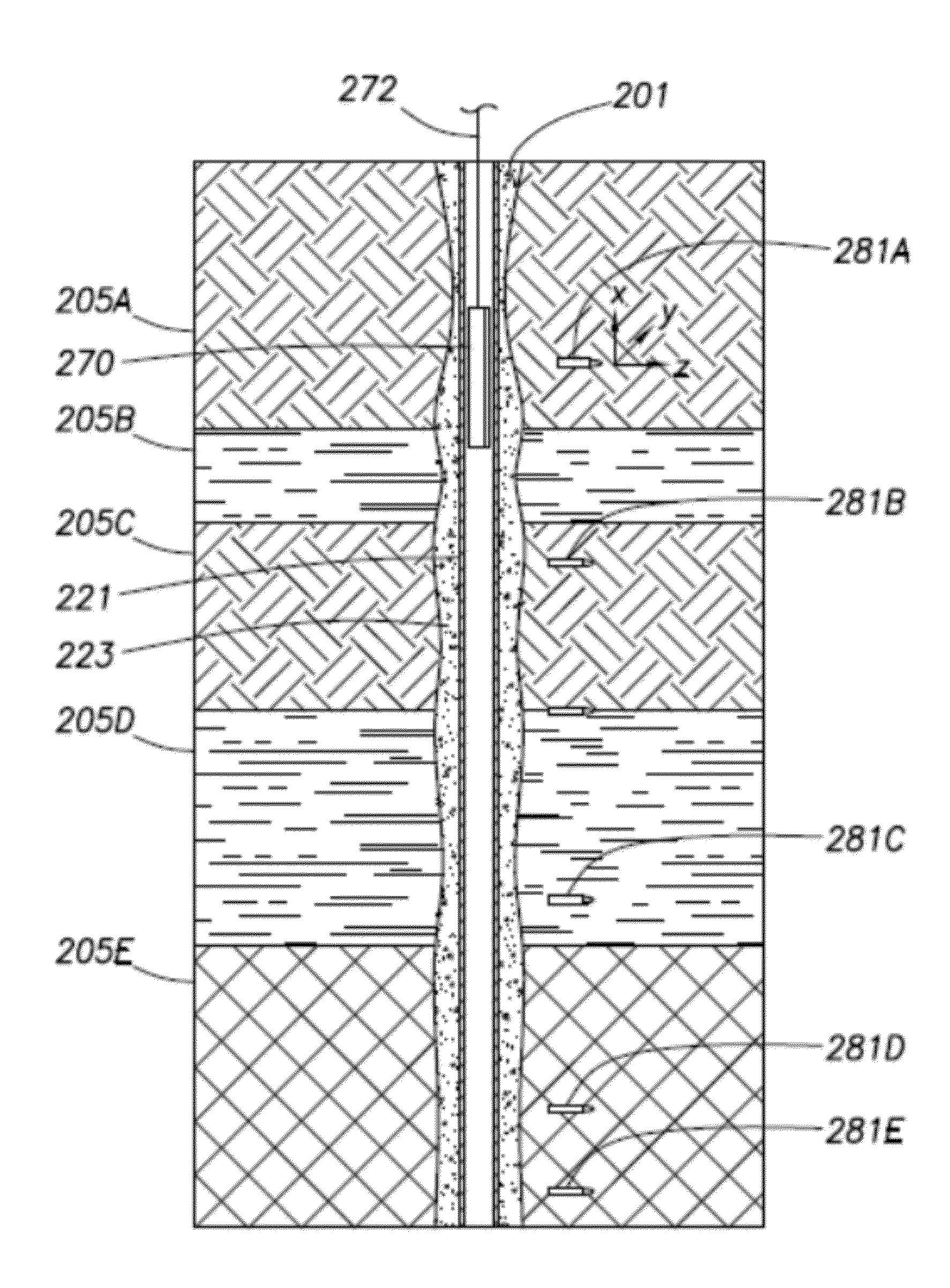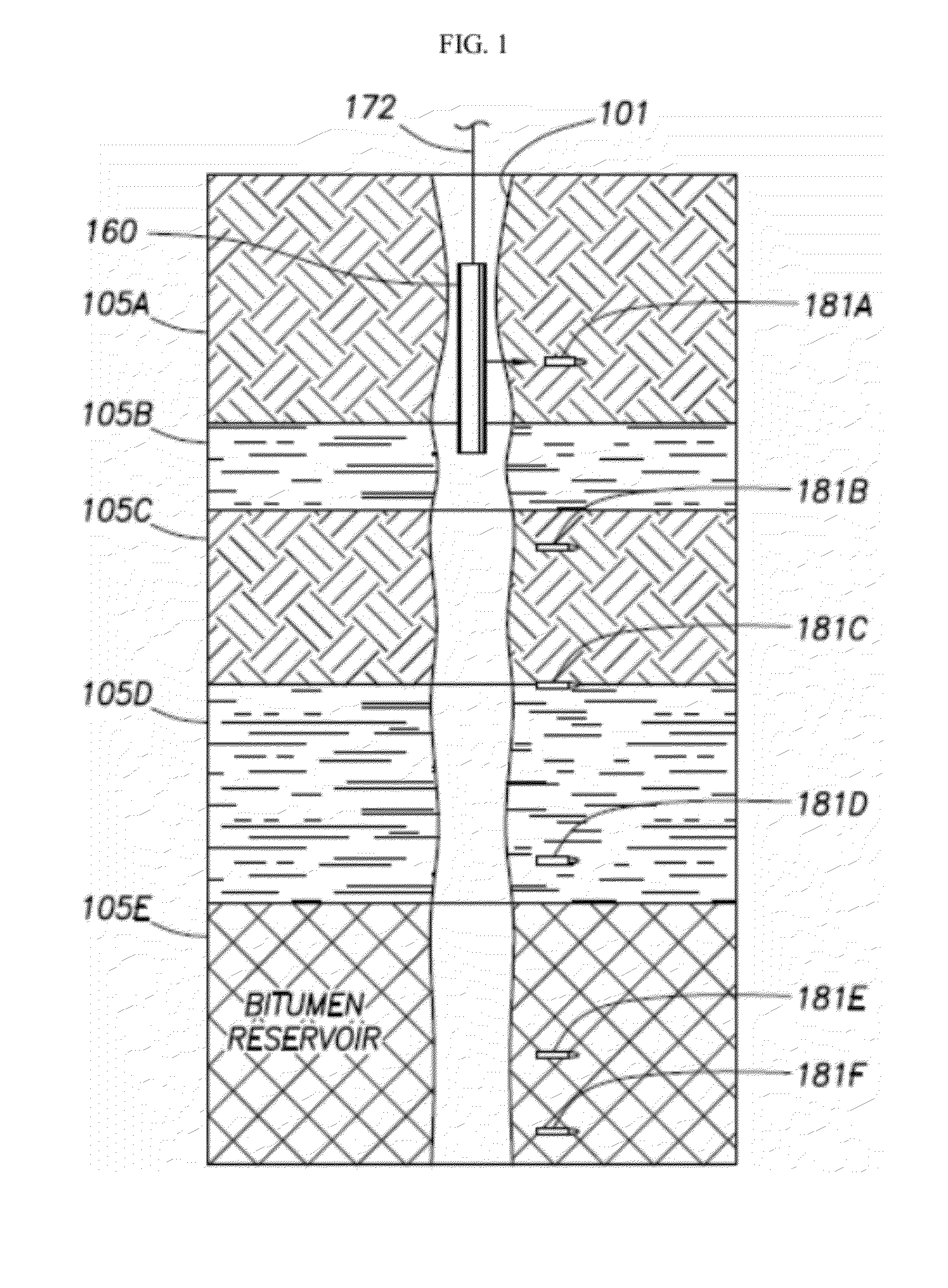Subterranean formation deformation monitoring systems
a monitoring system and subterranean technology, applied in the field of subterranean formation deformation monitoring systems, can solve the problems of easy to see subsurface subsidence, lose air gap, increase risk, etc., and achieve the effect of greater deformation detail
- Summary
- Abstract
- Description
- Claims
- Application Information
AI Technical Summary
Benefits of technology
Problems solved by technology
Method used
Image
Examples
example 1
Field Test
[0082]A field test was performed to determine if magnetic markers can be placed in the formation using a modified, side wall percussion core gun, the explosive powder gram charge best suited for the different formations, the associated marker capsule penetration depths and detection capabilities of both the ORIT and the CBIL logs. The logs were used to both verify the signal after the magnets were placed and also to understand the penetration depth and damaged zone around the target.
[0083]The gun normally shoots an open topped, tethered cylinder into a formation in order to sample the formation, and then the core sample is retrieved. Here, the cylinder was replaced with an untethered magnetic bullet, as shown in FIG. 5. Various magnetic cores were placed inside specially manufactured hardened steel casings composed of a bottom or base, and pointed top that screwed over the base.
[0084]A 25 shot core gun was loaded with minimally modified drivers (designed to release the bul...
PUM
 Login to View More
Login to View More Abstract
Description
Claims
Application Information
 Login to View More
Login to View More - R&D
- Intellectual Property
- Life Sciences
- Materials
- Tech Scout
- Unparalleled Data Quality
- Higher Quality Content
- 60% Fewer Hallucinations
Browse by: Latest US Patents, China's latest patents, Technical Efficacy Thesaurus, Application Domain, Technology Topic, Popular Technical Reports.
© 2025 PatSnap. All rights reserved.Legal|Privacy policy|Modern Slavery Act Transparency Statement|Sitemap|About US| Contact US: help@patsnap.com



